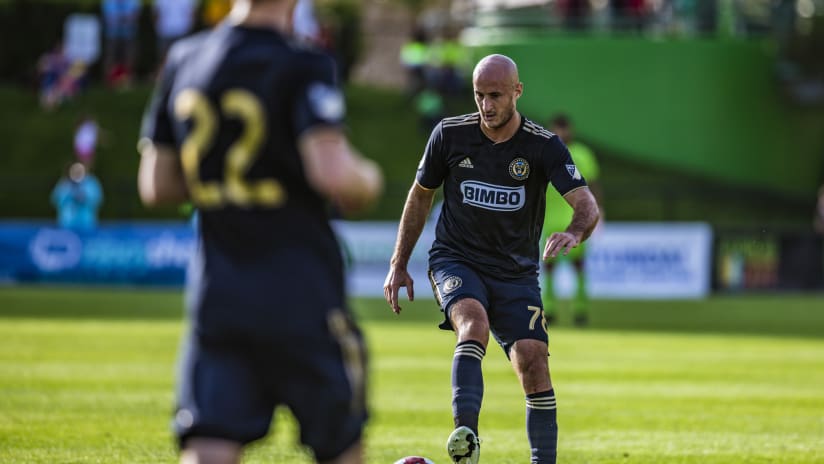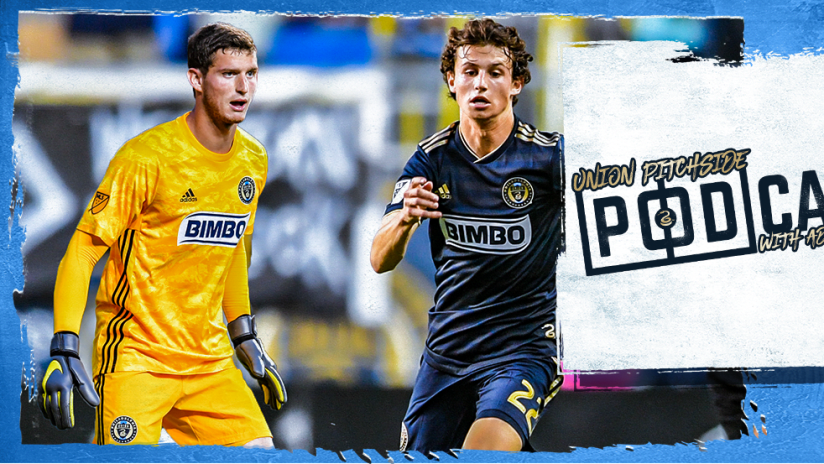Former Philadelphia Union man Veljko Paunovic brought his injury-riddled Chicago Fire team to Talen Energy Stadium Wednesday evening and deployed a man-marking system with Bastian Schweinsteiger as a sweeper.
Yup, it was weird.
As Jim Curtin noted in his post-game comments, though, what is old often becomes new again, with a few tweaks to fit changes in the game such as player fitness. And Paunovic certainly did not invent this unique system wholecloth: Chivas Guadalajara recently won the 2018 CONCACAF Champions League using a very similar system that boiled down to an audacious invasion of every opponent’s personal space until the ball popped loose for a counterattack.

The image above presents a good depiction of Chicago’s defensive system. The only structure involves rules about where on the pitch to initiate man-to-man marking and when to release, close down the ball, and protect the center of the box.
Early returns were good for the Fire. Philly, understandably, was a bit thrown off and utilized typical midfield movements. This often led to clogged lanes and the inability to move the ball forward from the center backs, who -- along with Haris Medunjanin when he dropped deep enough -- were allowed time on the ball. Quickly, though, the Union started to recognize areas to attack. Below, Auston Trusty takes his open lane, but the movement off of him does not provide a suitable outlet to establish possession in the final third.
And in the next clip, Mark McKenzie's carries the ball forward and initiates a series of good, sharp movements as the Union seek to shake their markers to create an isolation in which somebody like Ilsinho can face up his man on the dribble.
Ilsinho and David Accam were the best 1v1 attackers on the field, but it was hard to find them in enough space to turn and attack. One tactic that New York Red Bulls used against Chivas in the CCL (and again against the Union last weekend) was the up-back-and-through in order to free up an attacker from tight marking. Below is another image of Chicago’s man-marking and the lane it opened through the near-side half-space. Note that Schweinsteiger, as sweeper, has no man so he can drift over to cover if any player is beaten.
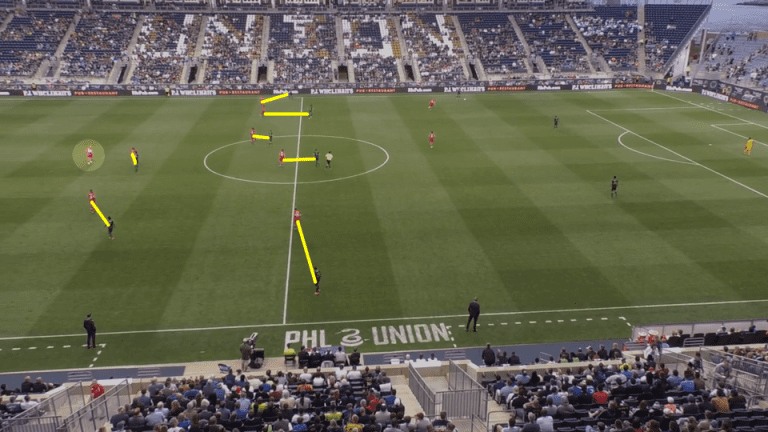
The clip below runs through the next few seconds after that image. As the ball progresses to the near side, Ray Gaddis’ man gets tight and opens the lane through the center to David Accam. However, there is no midfield support for Accam to play back to and then run through, and Trusty chooses to play wide to Gaddis, meaning the Union fail to utilize the space they have created for Accam.
Fire run slow-motion flea-flicker plays
In attack, Chicago was determined to dominate the wide areas in order to eventually pull the Union high and get behind the fullbacks or, more often, create space for Schweinsteiger. The German maestro sat deep, but could also move forward with the ball if granted space. He remained central in attack while the Fire overloaded the wings and forced Philadelphia to commit players wide. Once that occurred, the ball was returned to the center and Chicago pushed numbers up against the Union defense to create 1v1s while Schweinsteiger observed the field like a big German quarterback.
In the clip below, Chicago moves the ball wide and gets numbers into the outside third of the pitch to pull the Union away from the ball. Kevin Ellis collects a pass to the center and draws one more Union player out so Schweinsteiger has endless time to look for a good option.
When their captain had time, the Fire tried to create gaps in the Union defense with checking runs and angled cuts in behind. The image below marks a point moments before Jorge Corrales, at the top of the screen, made an angled run behind Mark McKenzie and nearly poked through Philly’s defense.
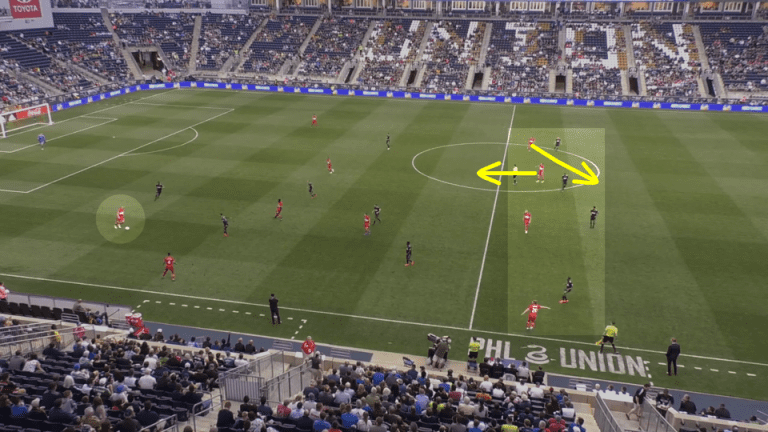
Breakthrough driven by quick play
The Union’s breakthrough came in the final moments of the first half when Ilsinho dropped Schweinsteiger into the spin cycle while simultaneously leaving Brandon Vincent in a Wonder Years time freeze. But the opportunity for the Union’s Brazilian magician to face up defenders came from the intelligent play of Keegan Rosenberry, Borek Dockal, and Cory Burke.
Burke was maligned on social media for his lack of statistically-measurable contributions beyond his goal, but against the Fire’s setup it was far more important that he take away Schweinsteiger’s time and draw his defender, often Kevin Ellis, out of the back line to open space for others. Those movements don’t show up on the stat sheet, but they were necessary in the buildup to the Union’s opener.
It is easy to overlook Rosenberry’s role in creating this goal. The right back sprints to restart play, and this allows Dockal to get on the ball before Chicago can find their men. In fact, you can see Alan Gordon encouraging the rest of his team forward to set up before the Dockal can assess the situation.
This is where Burke’s movement comes into play. In the image below, you can see Burke before he enters the screen in the clip above.

The Jamaican actually uses a double move -- very similar to what wide receivers use in American football -- to draw Brandon Vincent forward so Ilsinho can run into space near the top of the box. That extra second Burke provides is key, as you can see in the clip that Vincent arrives on the scene just after Ilsinho has set up to attack on the dribble.
Chicago adjusts at halftime
Once the Union were ahead, Paunovic could no longer afford to sit and play for a point. At halftime, he made a radical change to the team’s shape by putting Schweinsteiger into a free-floating attacking role.
If you think about the sweeper as a player with the freedom to offer defensive assistance wherever needed along the back line, the German played that role but in attack during the second half. Initially playing as a second striker and pushing Aleksander Katai to the left wing, Schweinsteiger had freedom to move throughout the midfield to create and break down the Union defense.
Most of the time, this meant occupying the left half-space in order to combine with Katai, Chicago’s most dynamic attacker.
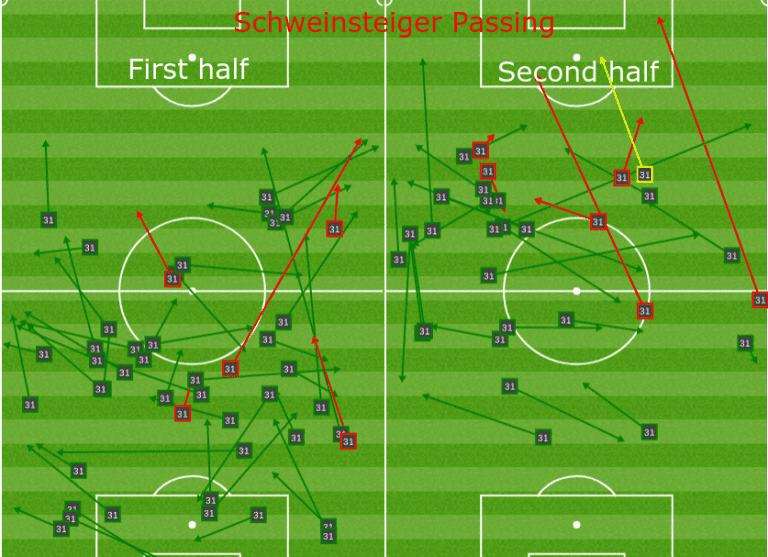
Schweinsteiger also began initiating a different type of defense for Chicago. Instead of sitting deep and giving the Union center backs time on the ball, he could start pressure further up the pitch, with the rest of the team following as they sought to force the Union to get rid of the ball, as in the clip below.
Speed and individual battles again lead to goal
The Union added a second goal through a set of circumstances that appeared different from their first goal but actually reflected very similar processes at play.
After a corner kick was cleared to Gaddis, the fullback quickly plays (well, slightly underplays) the ball wide. Receiving it back, Gaddis has options to his left, but chooses to return to the right because that is where Dockal, the Union’s volume playmaker, is waiting. Dockal beats his man, and, as with Ilsinho’s goal, Chicago is immediately in trouble. The Czech’s perfect cross is easily nodded home by Cory Burke.
Reasons to worry?
Despite the 3-1 win, Jim Curtin saw plenty of room for improvement. He singled out the team’s seeming lack of focus after going up two goals as a point of concern.
Additional concern comes from Mark McKenzie’s injury, which forced Jack Elliott into the match. Elliott struggled to find his rhythm at first, and one play will be a particular point of interest with Atlanta FC and Miguel Almiron on the horizon.
Almiron is a wonderful player on and off the ball, and his movements in the final third are energetic and designed to open spaces for others as well as himself. In the clip below, you can see Schweinsteiger initiate a play then sprint down the center, drawing Elliott in and opening up Alan Gordon at the back post.
Atlanta excels at creating these sorts of situations for defenders, in which an athletic midfield player is suddenly bearing down on you while another attack drifts out of vision and, eventually, out of mind.
If McKenzie can’t go, Elliott and the Union will need to be prepared for scenarios like this on Saturday, because Atlanta will not be reliant on an aging German; they have the league’s most expensive teenaged transfer and Almiron instead.

